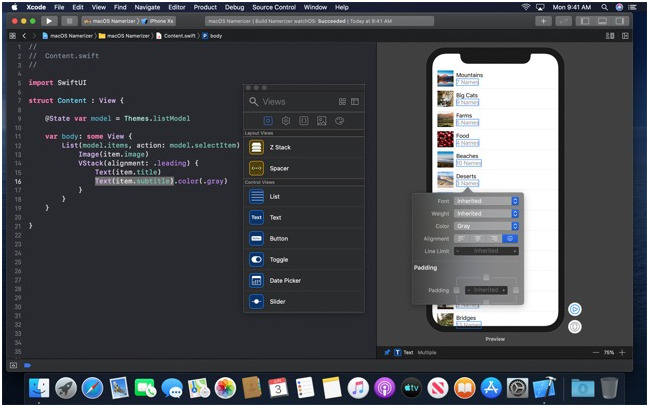
- Install xcode for catalina how to#
- Install xcode for catalina install#
- Install xcode for catalina update#
Having identified the version you want from the list that’s offered, use a command such as
Install xcode for catalina update#
Software Update found the following full installers: (note that the option starts with two hyphens, not an m-dash) First list the installers available using the command

Your fallback then, if you’re running Big Sur or Monterey, is to use the softwareupdate command in Terminal. Sometimes that may not work, with macOS complaining that it isn’t capable of installing such an old version of macOS/OS X. Look in the main Applications folder for the installer app, whose name should start with Install, and make a copy of that.
Install xcode for catalina install#
Once that download completes, the installer app will open and probably inform you that it’s too old to install on that Mac. That will then invite you to confirm that you do want to download the old version. Simply click on the appropriate link, and that installer page will open in the App Store, where clicking on the Get button should start the download through the Software Update pane.
Install xcode for catalina how to#
Unfortunately installers aren’t always easy to come by, so in this article I explain the options offered by Apple for obtaining an official and properly signed installer for those versions, as well as how to download old versions of Xcode.Īpple’s support page lists all those installers currently available through the App Store and official downloads going back as far as OS X Yosemite. It might be for an old Mac, or a new Virtual Machine, for example. as much as possible.There are plenty of good reasons for wanting to install an old version of macOS or even OS X.

These days, my apps are completely re-organized and make heavy use of protocols and value types. I ended up using classes for almost everything. For example, my Swift 1 apps were organized just like their prior Objective-C versions. Over the years I've also re-looked at basically everything I wrote and performed refactors as-needed. Swift 4's changes were not too bad and Xcode's fix actions could tend to most of them. While I have steadily moved my app through all versions of Swift (it's really best to stay up-to-date), I can definitely say that the most challenging was transitioning to Swift 3.

Apple also advised that developers write Swift code with preferred naming schemes (e.g. When Swift 3 came out, there were a large quantity of function name changes all throughout the SDK. And will have to disagree to just copying and pasting some of the older code.


 0 kommentar(er)
0 kommentar(er)
